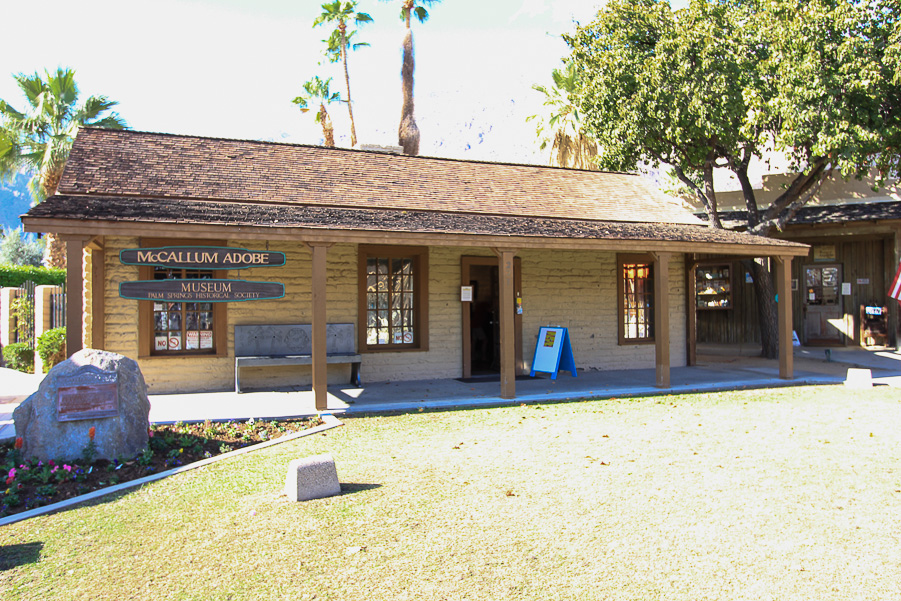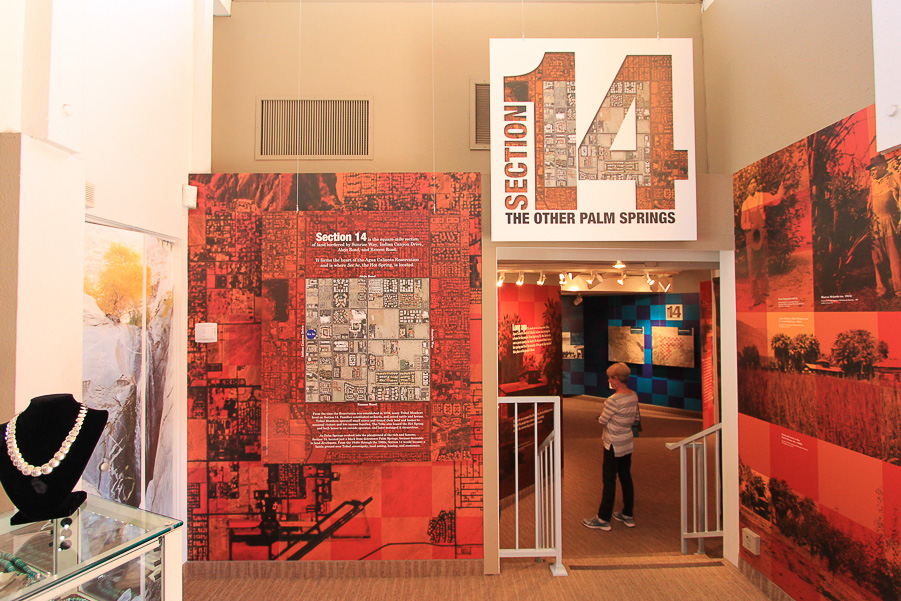October 29, 2015 - Now that it's fall and the desert temperatures are tolerable, we headed back to Palm Springs to visit the Village Green Heritage Center. In one small park right downtown there are four small museums all nestled together.

The Palm Springs Historical Society oversees two museums on the green and our first stop was at the 1893 Cornelia White "Little House." This is the second oldest building in Palm Springs.




The house was constructed of railroad ties salvaged from the failed narrow-gauge Palmdale Railroad line that ran through the area. When originally built, it was part of the first hotel in Palm Springs, the aptly named Palm Springs Hotel.

The second museum, also operated by the Historical Society, is the oldest building in Palm Springs, the 1884 McCallum Adobe. It was erected with the help of the local Cahuilla people for the first non-Indian family to settle here.

Inside this structure, the Historical Society displays all things Palm Springs, including a large Frank Sinatra exhibit.

Next to the adobe is Ruddy's 1930s General Store Museum. The museum is an authentic recreation of a general store operating in the 1930s and early 1940s. Every detail is authentic, including the original showcases, fixtures, signs and products. More than 6,000 unused items, 95% of them filled with their original contents, line the shelves and counters.





Our last stop was to see the Agua Caliente Cultural Museum. It is a cultural and historical museum, focusing on the Cahuilla people of the Coachella Valley. The original territory of the Cahuilla included an area of about 2,400 square miles, near the geographic center of Southern California.


Their current exhibit tells of a very sad story in the history of Palm Springs, called "Section 14: The Other Palm Springs." The city was originally divided into one-mile square sections by the U.S. Government and the Cahuilla occupied Section 14, which is right in the middle of downtown. However, no city services were provided to the Cahuilla living there; no water or sewer, no electricity, no trash pickup, etc. In the 1940s and 1950s Palm Springs was in its development heyday, but Section 14 looked bad to the town fathers. So the town fathers tried to elevate its status through the use of strict zoning laws that the Cahuilla couldn't afford to comply with. While some people saw it as a slum, others saw it as a huge development opportunity. But for the people who lived on Section 14, it was home.



The frustrated town fathers then decided to systematically demolish everything in Section 14 and they did over a twenty year period. Unfortunately, some residents didn't receive any notice before their homes were bulldozed and burned, along with all of their personal contents.

President Eisenhower was appalled when informed of the tragedy.


It is not a pretty story but one that has to be told. We learned today that when the Smithsonian Institution heard about this exhibit they took a special interest in its implications and after this exhibit closes in Palm Springs, it will be moved to Washington, D.C. to become a permanent Smithsonian exhibit.
On a lighter note, it was time for lunch at the Lulu California Bistro right across the street. I had their Eggplant Parmesan and Judy had their Santa Fe Panini, which is roasted pork loin, Monterey pepper jack cheese, avocado and onions, and served with a chipotle chimichurri sauce. Everything was good, including their Peroni and Moretti beers. After tasting both, we decided that we like the Moretti just a little bit better.
